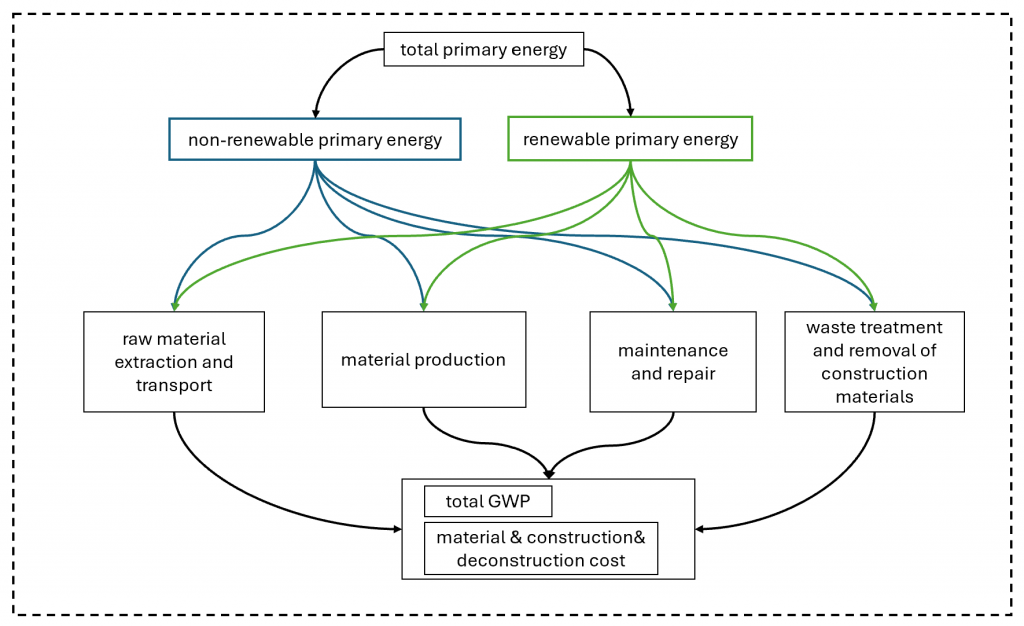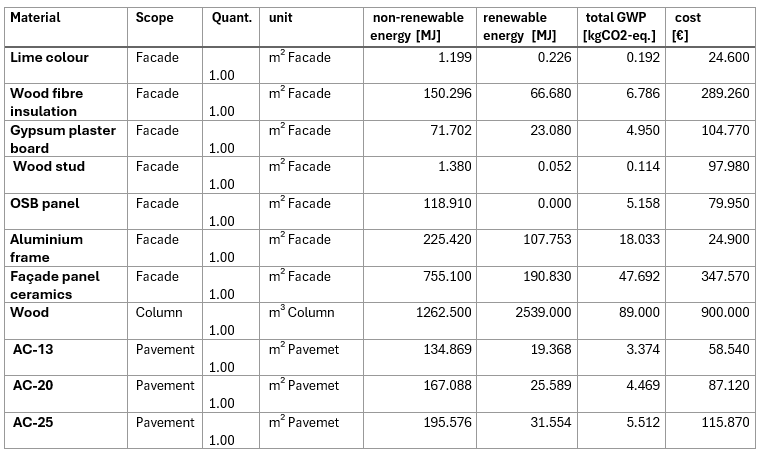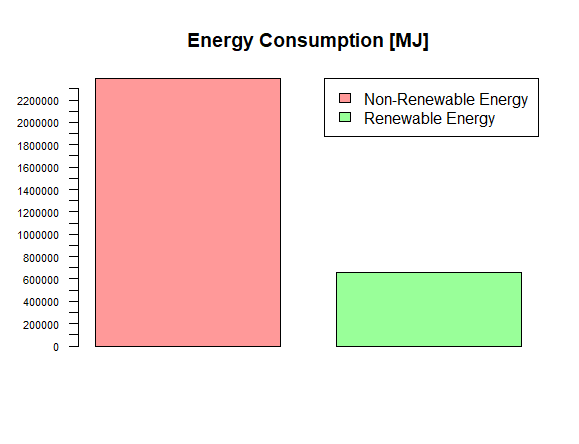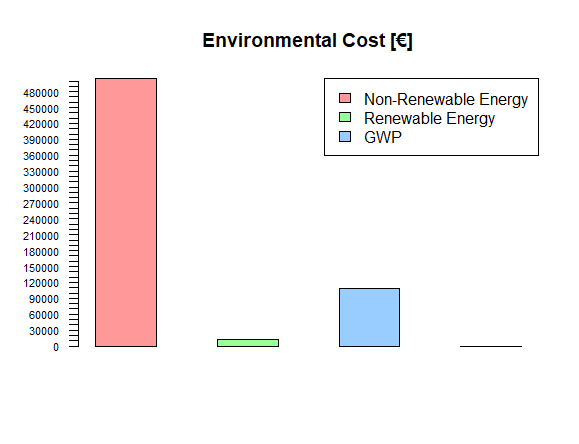Scale and Scope
The goal of the integrated systems life cycle analysis (LCA) is to determine the energy consumption, the global warming potential (GWP) and the material plus (de-)constructio cost throughout the systems life cycle especially in relation to the maintenance strategy.
While the GWP indicates the environmental impact of the system regarding greenhouse gas emissions the material an (de-)construcion cost are an important economical factor for governments and companies. The energy use throughout the life cycle is relevant for both environmental impact and cost.
The LCA includes the stages from raw material extraction and processing, the production of the construction materials, maintenance and repair as well as the deconstruction.
Combined Life Cycle Inventory (LCI)
The three LCA conducted for the single systems examine different environmental indicators.
The creation of a new combined LCI containing the values for the selected indicators facilitates the evaluation of the integrated systems environmental and economic footprint. For the simplification of the implementation the individual LCIs are fused into one. The data for the environmental indicators in this LCI originates from the German open-source database “ökobaudat”.
As the LCI suggests the indicator values can be determined directly by multiplication with the facade area, pavement area or column volume depending on the subsystem. Therefore, the input values for the calculation of the indicator quantities and there exemplary values for the LCA are:
- office building length: 30 m
- office building width: 20 m
- number of building stories with a predetermined story height of 3 m: 2
- column diameter: 20 cm
- distance between columns: 5 m
- road length: 40 m
- road width: 7 m
LCA Results
The results of the LCA are shown in the table below.
A good measure to make the indicators comparable in spite of their different units is determining their environmental cost. The environmental cost is the monetary evaluation of the damage caused by an indicator. Examples for this damage are health issues, poor harvests, material damage due to environmental disasters and the damage of ecosystems.
The unit values for the environmental cost used in this LCA are taken from a study of the German Federal Environment Agency for 2024 [1]. The environmental cost for energy is highly dependent on its source which is why the values for this LCA are interpolated using the percentages for energy sources in Germany in 2024. While one MJ of non renewable energy has an environmental cost of 0.21 € it is only 0.02 € for one MJ of renewable energy. Therefore, the differentiation between renewable and non-renewable energy consumption is essential. With 0,88 € per kg of CO2-eq. the environmental damage produced by one kg of CO2 is significantly higher than for one MJ of non-renewable energy.
The figure below illustrates the environmental cost resulting from the different indicators.
It becomes apparent that the consumption of non-renewable energy throughout the systems life cycle causes by far the highest cost due to damage of the environment. Its environmental cost is five times higher than for the GWP. Renewable energy causes significantly less environmental costs then both of the other indicators. The comparison of both diagrams shows that the difference between renewable and non-renewable energy in the environmental cost is much larger than for the energy consumption. In conclusion the use of renewable energy can significantly reduce environmental damage caused throughout the life cycle of our integrated system.
The total environmental cost of the system is 625,088.1 €. In comparison to that the construction and maintenance cost of the system of 1,590,499.79 € is much higher.
However, as explained above the environmental cost is highly dependent on the energy sources and also the time. As global warming progresses, the damage resulting from one MJ of energy or one kgCO2-eq. could increase seriously. Moreover, the environmental cost also depends on the weights assigned to immediate and future damages. The values used in this study result from penalizing immediate and future damages equally.
| Main Page | Introduction | Integration Context of the Civil Systems | Maintenance Strategies | Life Cycle Analysis | Multi-Objective Optimization |




